The city of Chicago has a long history of mischievous creators. The enigma that is Oil Watt continues in this spirit of innovation through creating distinctly upper Midwest artworks and the running of Free Range Gallery. Through his creation of prints and sculptural works, curatorial practices, and teaching, one can sense a multi-layered humor. Though often debated, one will find dark irony, satirical wordplay, the surreal, and epigrammatic paradox in tactile objects that are much deeper in meaning than that seen initially through his use of simplistic materials in creating easily recognizable assemblages. This week The COMP Magazine took the Brown Line up to Albany Park to chat with Watt about his early introduction to the fine arts, the overlap of printmaking with three dimensional production, the running of Free Range Gallery, and how these aspects are translated into his teaching.
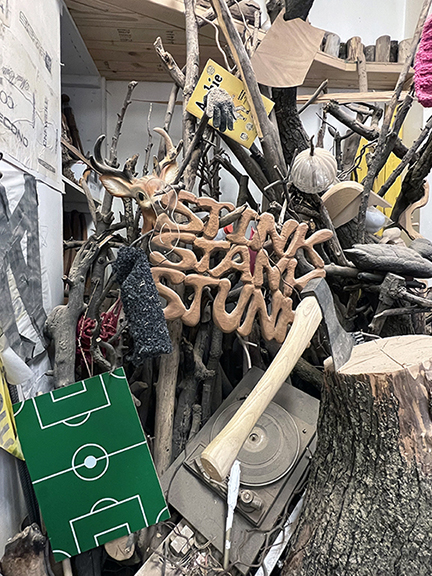
You have been working in Chicago for nearly three decades, run free range Gallery and are Associate Professor in Printmaking at the School of the Art Institute. I’m wondering if we can back up a bit. Can you identify when you decided to focus your life on the fine arts? Was there a specific person or experience that prompted you to devote your life to becoming an artist?
As a child, I spent every other summer in Kassel, Germany where my mother is from. A family friend was a professor at a Kunst Akademie there, and she often took me to museums and galleries. I saw some early versions of the Documenta exhibitions and a lot of Rembrandt paintings and prints in the local collections.
Although all of this exposure to traditional and contemporary art was influential and intriguing, as a kid I still just wanted to watch cartoons and read comic books. I think the combination of fine art and more popular culture forms of imagery and imagination was very influential to what I wanted to make as a kid– and even as an adult.

Let’s talk about ducks (decoys). This waterfowl has been a recurring theme in your practice. In 2022, you published a book, 101 Decoys, that outlines your output. You use a wide arrangement of materials, from garden hose to light bulb to toy blocks, when creating these artworks. Can you share with us why you focused on this item? What was your initial idea and how did you see this evolve over time?
Well, in 2020 I was awarded a sabbatical from SAIC. I had some big plans to travel around to a few residencies. When the pandemic hit, I was only able to do a residency at the Roger Brown Studio in New Buffalo, MI. I was working on some wood-carved sculptures at the time, but somewhat aimlessly. Roger Brown and his partner George Veronda collected some decoy forms in their home. But they seemed to gravitate toward odd representations of ducks and other water fowl…. Really strange, unorthodox decoys. I suspect the makers of these decoys were not highly trained in woodworking. But it made them all the more interesting to me—how the forms were a bit off, clumsy, weird caricatures…
I decided to make my own decoy based on their collection.
Then I made a few more.
When I returned to Chicago, I kept on making them, but mostly based on things I found while taking walks around the city. I started to think about minimum requirements for “duck” representation.

Upon initial inspection, I sense a bit of humor, splashed with a touch of irony. Can you speak to this observation?
Looking back through years of my work, much of it involves humor—tropes and cliches that are familiar and commonly used to make people laugh. I’ve never really tried to make funny things, but I often employ tools associated with humor. For a while I was basing all my projects on props from Looney Tunes cartoons—taking fictional objects and making them “real”. Often, they were pretty funny props that didn’t operate as well when made into actual objects.
I did read that of all animals, ducks are the ones most related to humor. This is based on a study done in 2002 at the University of Hertfordshire in the UK.
If you’re going to tell a joke using an animal, use a duck. I went for 101 decoys (as a number) because when I was a kid, we used to read 101 Jokes books.
I can’t really address irony because the kids all tell me irony is dead.
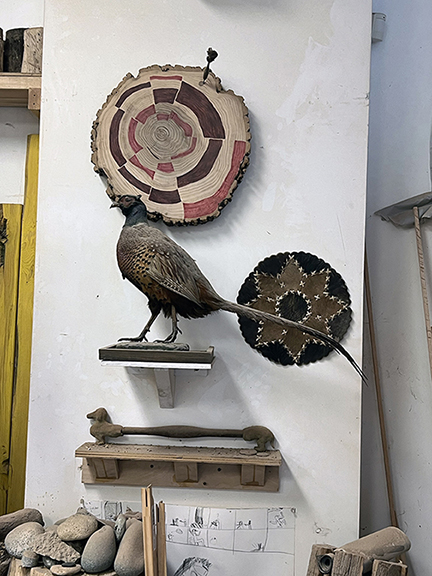
Can you walk us through your studio process? Now do you select materials? How do you identify intent, etc.?
My primary area of focus is printmaking. But rather than stick to woodblock printing or screenprinting, I spend a lot of time thinking about and looking at print’s relationship to things that exist in the world in a multiple format—sure there are books and newspapers and billboards, but there are also expanded versions of printed objects that I consider part of a larger printmaking/multiple vocabulary. And it’s a pretty endless list of possibilities—t-shirts, cell phones, chairs, automobiles, eyeglasses…I could on and on and on…As I consider these things as material, I like to play a game of “variation on a theme” in my head.
Or as Claes Oldenburg called the game, ”What if?” Using these objects as a source, I like to drag them through all kinds of permutations and iteration. Often this involves working with different materials, scale shifts, undermining function, or reassigning context.
But lately I’ve been using material (primarily wood) as a starting point for play.
Sometimes I get a lot farther with a project if I just experiment with materials and form.
So, I guess I don’t have a strict process when I walk into my studio. But it certainly helps to have multiple projects going on at any given time. I have a studio full of unfinished projects that I started years ago. I also have decades of sketchbooks full of ideas that I once thought were worthy of executing.
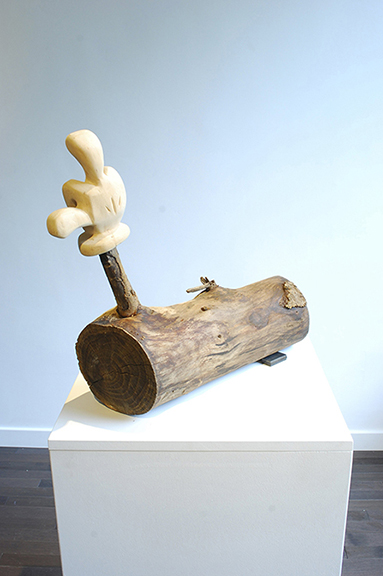
In addition to your studio practice, you have run the Free Range Gallery in the Albany Park neighborhood of Chicago for over a decade. Can you tell us about the focus of this gallery? Are there any specific shows in the past that you find memorable? What’s on the schedule for Fall 2024?
Free Range provides a small white cube gallery for artists of all stages in their career to experiment with new ideas and expand ways of thinking about presenting their practice. Artists are given free rein to explore alternative methods of examining and challenging exhibition modes in how they exhibit their work. Artists may work with other artists, show work in developmental stages, exploit the store front windows, experiment with unfamiliar media, or envision their practice with a completely new lens.
Some shows at free range are traditional exhibitions of work, but I get more excited to see artists mess around with their own notions of how their work is supposed to be exhibited.
One of my favorite exhibitions was by Milwaukee artist Mark Klassen, who turned the gallery into an office space. From the street, it appeared to be a normal office with a desk, bulletin boards and an air conditioner. However, Mark painstakingly constructed every element out of wood. And the best part is that he installed a fog machine inside the desk that turned on every 15 minutes. It gave the appearance that the desk was on fire.
The next show will be collaborative work by Christian Gutierrez and Mikey Mosher. I believe there will be some kinetic sculpture involved. The show is called Manual of Instructions. Also coming up is a show of sculptures by Tong Liu.

In addition to the noted, you also dedicate time to teaching. Are there any recurring items or ideas you share with your students? Specifically, what do you hope they take in their experience working with you?
I primarily teach through the printmaking department, mostly with undergraduate students. I try to emphasize the way printmaking provides a perfect vehicle for expanding a singular gesture into an expanded way of thinking and making.
Although printmaking is often viewed as a mode of reproduction (which is also beneficial), it is a medium that allows the artist to start in one space and then move in many different directions simultaneously.
I also hope that students use my classes to explore the ideas that only they are able to bring to the table. Everyone brings a unique experience to the studio—things no one else has access to. Distinct voices and stories are important. It can get very interesting when these stories are transformed through printmaking processes.

What do you value most in your aesthetic investigations?
I value the things that the materials and processes teach me. Surprises always keep me coming back to the studio.
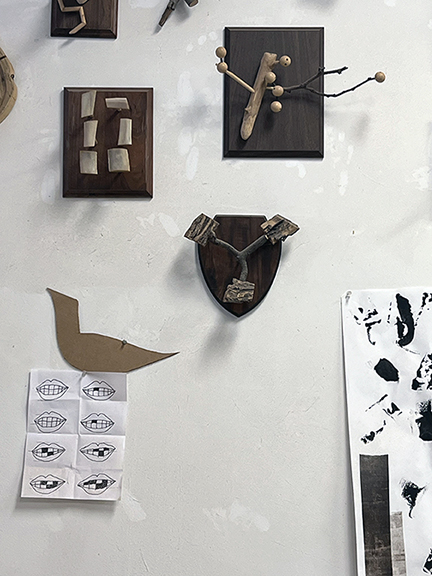
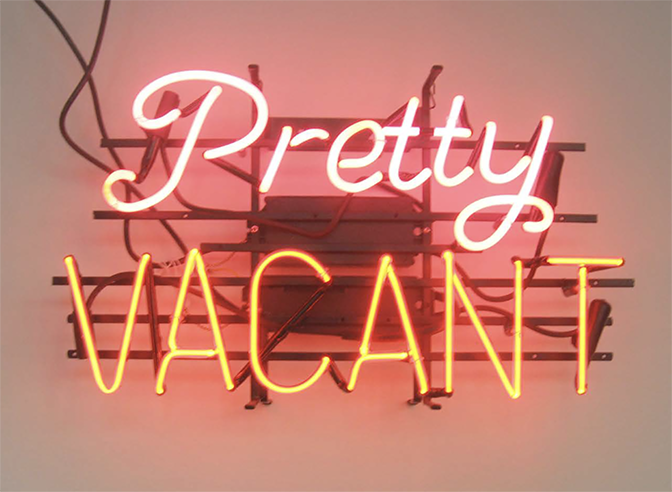
During the studio visit, you had a couple works in progress. What are you currently working upon? What’s the plan for the remainder of 2024?
I’m currently working on a few projects. I have a sculpture in the works for an exhibition called 69 Artists for 69 Songs, a group show based on an Album by the Magnetic Fields. It opens on November 1st in Elgin, IL.
I’ve been working on a series of 24 inch square woodblock prints called “The Rebellious Jukebox.” It’s a suite of prints based on my sketchbook activity of the last 4 or 5 years. And I’m still slowly constructing useless decoy duck forms.
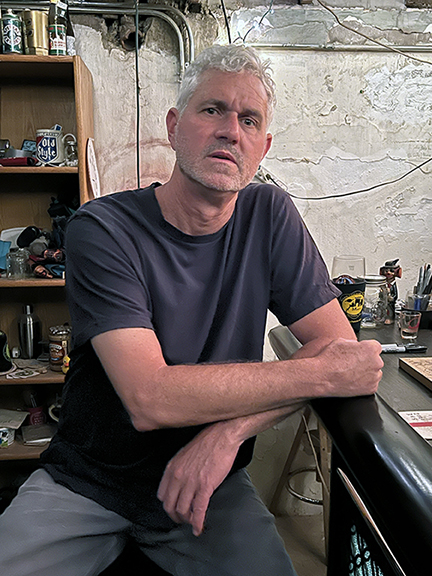
For additional information on the aesthetic practice of Oli Watt, please visit:
Frontline Arts – https://www.frontlinearts.org/frontlineblog/oli-watt
Oli Watt on Instagram – https://www.instagram.com/oliwattyourenot/
101 Decoys – https://101decoys.com
The Ski Club (Milwaukee) – https://www.theskiclubmilwaukee.com/oli-watt
Hyde Park Art Center – https://www.hydeparkart.org/exhibition-archive/oli-watt-here-comes-a-regular/
Colossal – https://www.thisiscolossal.com/2022/11/oli-watt-101-decoys/
Museum of Contemporary Art (Chicago) – https://mcachicago.org/exhibitions/2001/oli-watt
New City – https://art.newcity.com/2012/03/13/review-oil-watt-and-ben-bellaskirks-apartment/
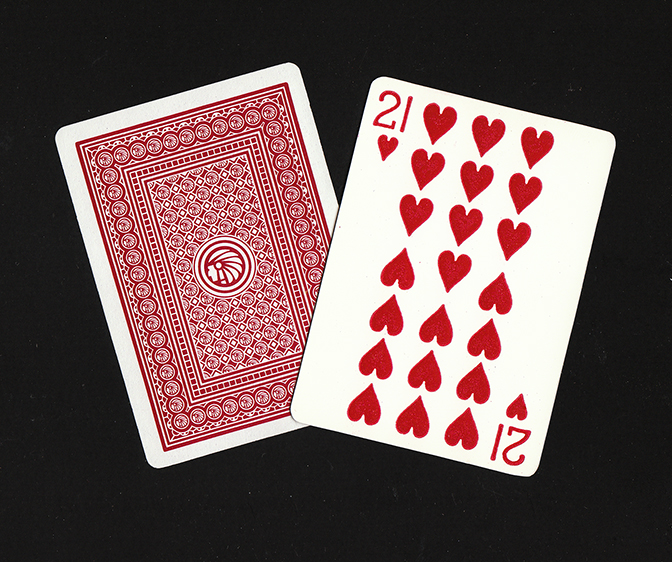
Artist interview and portrait by Chester Alamo-Costello


